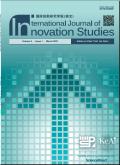The interplay between innovation adoption and pricing competitiveness in Sub-Saharan Africa
IF 5.3
Q2 MANAGEMENT
引用次数: 0
Abstract
The objective of this work is to evaluate the effects of adopting technological innovation, non-technological innovation, and their complementarity on price competitiveness. This work employs a recursive bivariate probit model applied to microdata from 1897 firms in three Sub-Saharan countries: Cameroon, Côte d'Ivoire, and Senegal. This model allows us to solve the endogeneity problem by assessing the complementarity relationship between technological and non-technological innovation practices and their effects on firm competitiveness. The results confirm that technological and non-technological innovations are complementary and have significant effects on firms' competitive advantage in terms of price. This complementarity constitutes evidence that their simultaneous adoption contributes more to firms' competitiveness than the individual adoption of each type of innovation. Non-technological innovations facilitate the effectiveness of technological innovations, which leads to a competitive advantage of about 26 % when both types of innovations are adopted together. However, firms can also suffer significant losses in market share as a result of the non-adoption of innovations. Indeed, firms that do not adopt any innovations deteriorate their competitive advantage in terms of price by 4 % on average.
撒哈拉以南非洲创新采用与价格竞争力之间的相互作用
本文的目的是评估采用技术创新、非技术创新及其互补性对价格竞争力的影响。这项工作采用递归双变量概率模型,应用于三个撒哈拉以南国家(喀麦隆,Côte科特迪瓦和塞内加尔)的1897家公司的微观数据。该模型允许我们通过评估技术和非技术创新实践之间的互补性关系及其对企业竞争力的影响来解决内生性问题。研究结果表明,技术创新与非技术创新是互补的,对企业的价格竞争优势有显著影响。这种互补性证明,它们同时采用比单独采用每种创新对企业竞争力的贡献更大。非技术创新促进了技术创新的有效性,当两种类型的创新同时采用时,其竞争优势约为26%。然而,由于不采用创新,企业也可能遭受市场份额的重大损失。事实上,不采用任何创新的公司在价格方面的竞争优势平均下降了4%。
本文章由计算机程序翻译,如有差异,请以英文原文为准。
求助全文
约1分钟内获得全文
求助全文
来源期刊

International Journal of Innovation Studies
Business, Management and Accounting-Strategy and Management
CiteScore
8.10
自引率
0.00%
发文量
23
审稿时长
19 weeks
 求助内容:
求助内容: 应助结果提醒方式:
应助结果提醒方式:


